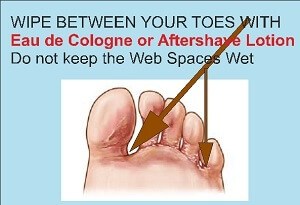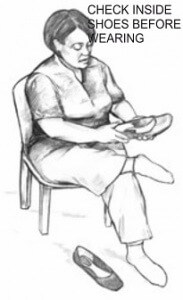Diabetic Foot Care Guidelines
Do you want to avoid serious foot problems that can lead to a toe, foot or leg amputation or loss of life . It’s all about taking good care of your feet. Foot care is very important for people with diabetes who have:
Loss of feeling in their feet
Changes in the shape of their feet
Foot ulcers or sores that do not heal
Nerve damage can cause you to lose feeling in your feet.You may not feel a small stone in your shoe that is causing a sore. You may not feel a blister caused by an ill-fitting shoe. It is foot injuries such as these. which though trivial for people without diabetes, can cause infections and ulcers, which in the case of diabetics can lead to full or partial amputation of the foot.
Along with nerve damage, the blood supply to your feet may also be less than in non diabetics and this also leads to delayed and prolonged healing in case of any foot or leg injury.
To prevent serious problems with your feet : –
 BLOOD SUGAR CONTROL
BLOOD SUGAR CONTROL- Check your feet everyday
• You may have serious foot problems, but feel no pain. Check your feet for cuts, sores, red spots, blisters, swelling and infected toe nails. Find a time (evening is best) to check your feet everyday.
• If you have trouble bending over to see your feet, use a mirror to see or ask a family member to help you.
- Wash your feet everyday
• Wash your feet in warm, not hot water. Do not soak your feet, because your skin will get dry.
• Before bathing check water temperature with your elbow.
• Dry your feet well. Be sure to dry between your toes. If web spaces are still damp, wipe them with cotton wool soaked in eau de cologne.
- Keep the skin soft and smooth
• Rub a thin coat of skin lotion, cream or petroleum jelly (Vaseline) on the tops and bottoms of your feet.
• Do not put lotion or cream between your toes because this may cause infection.
• Do not do vigorous massage to your legs or feet. - Smooth corns and calluses gently
• After bathing or showering, use a pumice stone to smooth corns or calluses (rough thickened skin)
• Do not cut corns or calluses. Don’t use razor blades, corn plasters or liquid corn or callus removers.
• Self/home surgery is dangerous and should be avoided. - Trim your toenails when needed
• Trim toenails straight across and smoothen them with a nail file. Don’t cut into the corners of your toenails.
• If you can’t see too well or if your nails are thick and yellowed, have your doctor cut them for you. - Wear shoes and socks at all times
• Do not walk barefoot – not even indoors – because it is easy to step on something sharp that you may not notice. In case of wounds or after surgery wear shoes inside the house also.
•Do not remove footwear during travel and place your feet on the floor of the vehicle
as this can cause burns. - Always wear padded socks with loose elastics with your shoes to help avoid blisters and sores – never wear shoes without socks. Seamless diabetic socks are best.
• Check the insides of your shoes, to be sure there is nothing inside them.
- Protect your feet from hot and cold
• Wear your shoes whenever you walk outside the house.
• Put sunscreen on the top of your feet to prevent sunburn.
• Keep your feet away from hot things.
• Do not put hot water bottles on your feet. - Keep the blood flowing in your feet
• Put your feet up when you are sitting. Swelling of the feet is common in diabetics due to impaired circulation.
• Do not cross your legs for long periods of time.
• Do not smoke/chew tobacco. Both reduce the blood flow to your feet. - Be more active
• Walking, dancing, swimming and bicycling are good forms of exercise that are easy on the feet.
• Avoid activities like running and jumping as they can cause injury to your feet. - Be sure to ask your doctor to:
• Check the feeling and pulses in your feet at least once a year.
• Decide if special shoes would help your feet to stay healthy. Your footwear may need to be modified to suit the alteration in the shape of your foot.
Do not walk by weight bearing on affected foot…use a support if required.
Make sure to call your doctor right away if a cut, sore, blister or bruise
on your foot does not begin to heal after one day.
Patients and their Families/Care givers co-operation and active participation in the management of Diabetic Foot Wounds is invaluable in the SUCCESS of Treatment
